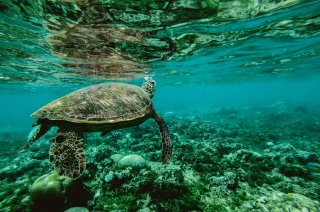
Convention on Biological Diversity
The Convention on Biological Diversity (CBD) was adopted in 1992 and entered into force in December 1993. Its objectives are the conservation of biological diversity, the sustainable use of its components, and the fair and equitable sharing of the benefits arising from the utilisation of genetic resources.
It covers all ecosystems, species and genetic resources, except human genetic resources. The CBD sets general rules to regulate access to genetic resources and their use. It also sets rules for the sharing of benefits between providers and users stemming from this use.
The Convention on Biological Diversity recognised for the first time in international law that the conservation of biological diversity is "a common concern of humankind" and is an integral part of the development process. The Convention covers all ecosystems, species and genetic resources, apart from human genetic resources. It links traditional conservation efforts to the sustainable use of biological resources needed for economic development, and it lays down principles for the fair and equitable sharing of the benefits arising from the use of genetic resources, including those destined for commercial use. Those benefits are intended to support conservation and sustainable use. The CBD also covers the rapidly expanding field of biotechnology through its Cartagena Protocol on Biosafety, which addresses the safe handling, transport and use of living modified organisms (LMO) and their effects on biodiversity. Importantly, the Convention is legally binding; countries that join it (referred to as the Contracting Parties) are obliged to implement its provisions.
Access and Benefit-Sharing
Access and Benefit-Sharing are addressed in the CBD in Articles 15 (Access to Genetic Resources), 16 (Access to and Transfer of Technology), 17 (Exchange of Information), 18 (Technical and Scientific Cooperation) and 19 (Handling of Biotechnology and Distribution of its Benefits). Article 15 confirms that “Recognizing the sovereign rights of States over their natural resources, the authority to determine access to genetic resources rests with the national governments and is subject to national legislation” and that “Access, where granted, shall be on mutually agreed terms” and “subject to prior informed consent of the Contracting Party providing such resources, unless otherwise determined by that Party.” The concept of a country providing resources is also operationalised in Article 15: genetic resources being provided by a Contracting Party means those provided by countries of origin or by Parties that have acquired the genetic resources in accordance with the CBD.
Biological diversity
Biological diversity – or biodiversity – is the term used to describe the variety of living organisms on Earth and the ecological complexes of which they are part. The biodiversity we see today is the fruit of billions of years of evolution, shaped by natural processes and, increasingly, by the influence of humans. It forms the web of life of which we are an integral part and upon which we so fully depend.
Biodiversity is often understood in terms of the wide variety of plants, animals and microorganisms. So far, about 1.75 million species have been identified, mostly small creatures such as insects. Scientists reckon that there are actually about 13 million species, though estimates range from 3 to 100 million. Biodiversity also includes genetic differences within each species – for example, between varieties of crops and breeds of livestock. Chromosomes, genes, and DNA – the building blocks of life – determine the uniqueness of each individual and each species. Yet another aspect of biodiversity is the variety of ecosystems such as those that occur in deserts, forests, wetlands, mountains, lakes, rivers, and agricultural landscapes. In each ecosystem, living creatures, including humans, form a community, interacting with one another and with the air, water, and soil around them.
It is the combination of life forms and their interactions with each other and with the rest of the environment that has made Earth a uniquely habitable place for humans. Biodiversity provides a large number of goods and services that sustain our lives, such as clean water, clean air, food, timber and climate regulation.
